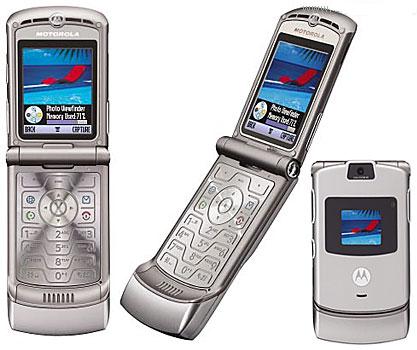Let’s say you have a RAZR phone. You know, like the one above. This was a super-popular phone back in the ’00s and just suppose you found yours in a drawer and wanted to use it. Would it still work?
What you probably could, and couldn’t, do
First of all you wouldn’t be able to activate it through any major carrier in the US. None of them will activate new 3G-only hardware anymore. But, there’s a loophole. You could buy a pre-paid SIM card, or use a SIM card from a newer device. Both of these methods have a really good chance of working. I say this because (ssssh) I tried it, with an actual RAZR phone.
That said, the experience was a little limiting. Of course there was no real internet access. The RAZR’s built-in browser didn’t work at all. I was trying this with the AT&T network and I don’t even know if they put data over their 3G network anymore. But I was able to make a call and send a text. And yes, it took a zillion years to type out a whole text. How did we ever live with T9?
How long will they let you do this?
That’s the real question. The latest information I have on this subject comes from 2019. I have to presume that like everything else in 2020, those plans have been thrown into disarray. But let’s assume that things are moving forward, and here’s the answer that I know as of this moment.
AT&T
AT&T plans to shut down its 3G-only network after December, 2021. At that point you will need an LTE-capable phone in order to use their network.
Verizon
Verizon’s CDMA network, which provided voice service in the days before LTE, is expected to leave the building sometime after December, 2020. Bad news if you still have an original Motorola Droid.
T-Mobile/Sprint
Because of the merger of these two companies, the shutdown of Sprint’s old network has been pushed all the way to 2023. However, T-Mobile will be shutting down its 2G network, which was the last way to actually use the original iPhone, at the end of this year. Probably.
Prepaid carriers and others
Most other carriers use bandwidth provided by one of the “big three.” Some of them also operate their own towers, but once you’re out of their area you’re using someone else’s. So they will probably shut down their 3G capacity as soon as the network they’re affiliated with does. If you’re not sure which it is, a google search will probably tell you.
Subject to change, of course
It’s pretty fair to say that a lot of companies are rethinking their plans this year and some of these deadlines may be suspended. But, you may not want to count on that. This is the time to upgrade away from that ancient phone and get something that will work.
Why are carriers doing this?
Getting rid of their 3G networks will let carriers replace them with 5G and LTE-Advanced networks which give people the data speeds and call quality they want. It’s certainly not the first time that we’ve seen old hardware become obsolete, and I’m sure it won’t be the last.
What phones will be a problem?
In order to keep moving forward, you’ll need a phone that supports voice-over-LTE. For the most part every major phone made in the last five years will do this. However, if you’re still rocking a flip phone or a smartphone from earlier in the last decade you might get a notice from your carrier saying it’s time to upgrade.
When you’re ready to make a change
Call the experts at Signal Connect. We’re AT&T Preferred Dealers and can give you all the same deals that you would get in a traditional AT&T store, without the added risk of deadly cooties. We can do it all for you over the phone and email. We’ll ship your new phone straight to you ready to use. It starts with a call to 888-233-7563 or a few moments filling out the form below!





